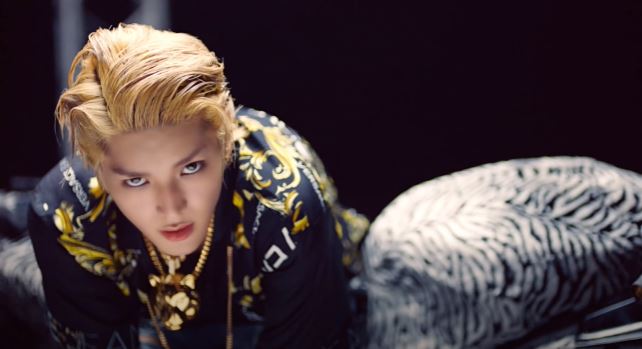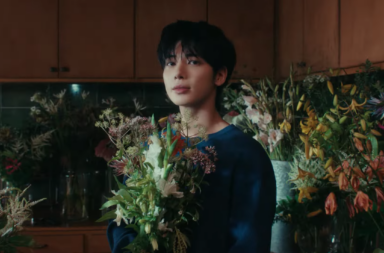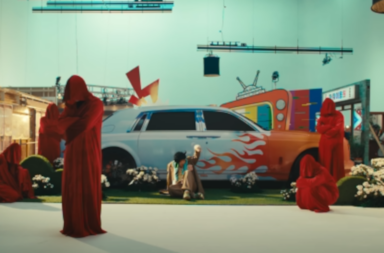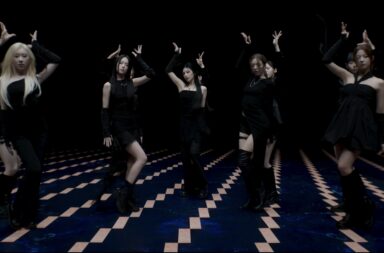
Tigers are iconic. Literally. Representations of the animal in artistic iconography reach back as far back as, well, art. Tigers have a revered place in religious and cultural tradition in East Asia, as well as less scholarly representations in pop and mass culture. The tiger is also the national animal of Korea and is often used as a signifier of its identity. In Western iconography, the tiger’s symbolic use is pretty exploitative. From Kipling to William Blake, the tiger is a figure of danger and mystery. Exoticised and colonised, particularly in classical art, tigers are more familiar as threats or prizes to be hunted than identities to be emulated. Tigers also symbolise Asian identities in Western art but as an “other”.
You may be thinking you’re about to read a review claiming “Tiger Inside” is an attempt to redefine and represent the Korean identity in the international marketplace. I’m not going to make that reach. Just as distinguished art has been created inspired by the tiger, there is a wealth of commercialised low-brow fare intended for the consumption of the masses. That’s us, we’re the masses. And the philistine art we have been given to consume is “Tiger Inside” by Super M.
They had me for a little while. Super M’s collaboration with graphic artist Junggi Kim for the “Tiger Inside” Art Film was an interesting addition to the promotions for the track. A teaser video shows the artist creating a painting featuring the members and tigers in a traditional Korean style. There are also contemporary commercial elements, from the city in the background of the painting, to the manhwa style depiction of the members. The art film gives the impression that “Tiger Inside” is an ambitious project placing traditional Korean art within a contemporary and commercial sphere. What they have succeeded in doing is creating gaudy gimcrack.
This song is not a rarefied, complicated artistic effort aimed at subverting expectations or giving nuanced representation. I’m not going to unpack the traditional symbolic meaning of tigers in Korean art because “Tiger Inside” is kitsch.
The philosopher and critic Walter Benjamin said, “kitsch is, unlike art, a utilitarian object lacking all critical distance between object and observer; it offers instantaneous emotional gratification without intellectual effort, without the requirement of distance, without sublimation”.
Some art uses symbols to add nuance to their ideas. “Tiger Inside” uses symbols like a toy hammer, to attract attention in a way that is eye-catching, loud, and fun.
The MV is unabashed in its consumerism. All the members flash Super M’s Super One merch to a distracting degree. Taemin dances in an 01 branded checked suit, wearing a bolt of material across his body emblazoned with “Super M”, and all I could think was, “where can I buy that scarf?”. Kai’s Gucci ambassadorship is also on display. Versace Jeans Couture should seriously call Taeyong and the camera directors to thank them. Every single shot of him in that silk button-down shirt was angled for premium branding.

The MV doesn’t have a plot or narrative message. We don’t see the members symbolically defeating their obstacles or developing to access or control their inner tiger. Ten briefly plays around with some rope but it’s not for a reason. The sets are mostly empty, industrial stages reminiscent of airplane hangers, where the members powerfully perform the song. There is no growth or individual characterisation. The protagonists of this story are the source of interest and value. They don’t need anything from their surroundings besides an impossibly cool zebra-print motorcycle. They don’t require introduction because everyone knows the K-pop Avengers. Tigers don’t need to explain themselves or create a narrative to hold interest.
If I wanted to project some depth onto it, I would say the choice to present the members in this way tells the viewer they don’t need external trappings to communicate their worth. The members are decked out in expensive, luxury brands, and posing with the aforementioned custom bike. Wealth and status are important to expressing one’s inner tiger but this wealth is self-contained. They are not dependent on their surroundings. Super M brings the luxury, confidence, and clout to the party and they are just waiting to be unleashed on the world.

We don’t have to learn or think about anything in order to feel the hype of “Tiger Inside”. You don’t have to know the tiger’s significance in Korean culture to be taken up by barked adlibs and a peek of tummy. Maybe there is a message to be found about introducing Korean culture to an international audience but the references read more like gimmicks than edutainment.
The song’s lyrics show it’s about as deep as a puddle after a spring shower. Taeyong’s shared verse with Mark made my jaw drop because of how inane it is. He simply describes making noise:
We can make animal sound
Louder loud
Hidden powers arise
Exclamations burst out
Turn up the volume
I am genuinely impressed at how creatively consistent the references are despite meaning very little. Things fall apart in some of the hooks: “hurry up, wake up” and “dinner’s ready” could have been replaced with something more feline.

That being said, the song is so much fun. I know I’m going to put it in my “Louder” Spotify playlist. It’s vaguely inspirational if you want to be a corporation when you grow up. The details are not important if you ignore them. The beat is sick, the animal sounds are convincingly delivered, and it is a earworm that grows on you. It is silly, lurid fun and should be enjoyed by people with a taste for it.
K-pop has been flirting with many more East Asian creative references in the past few years. The lyrics, sets, and costuming in songs like Vixx’s “Shangri La”, NCT 127’s “Kick It”, Stray Kids “God’s Menu”, Oneus “Lit”, come to mind along with solo efforts like Mino’s “Fiance”, Bang Yongguk’s “Yamazaki” and Agust D “Daechwita”. These have used traditional iconography in ways both irreverent and serious to varying degrees of success. It is interesting to see K-pop draw inspiration from more regional sources. In a genre where appropriation is commonplace, it is gratifying when artists attempt more authentic creative projects.
This phenomenon is also an opportunity for critics to bring nuance to discussions that are flattened to questions of whether someone is cancelled or not. “Tiger Inside” inspires thoughts about representation and artistic expression, for me. Is wearing a jeogori as a crop-top subversive or cheap provocation? Will drawing from more Asian inspirations result in greater cultural exchange and less offence? Is Mark’s mullet an 80’s reference and can “Tiger Inside” be thought of as a spiritual successor to “Eye of the Tiger” by Survivor? All these thoughts are welcome distractions during a time of international uncertainty and anguish.

“Tiger Inside” does not meet the standards of pseudo-intellectualism but that is not its intention. It is not a tasteful or subdued song. If it were a taste, it would be one of those Wagyu beef burgers. A lot of people argue the beef is wasted by being ground into burger patties but others say it adds to the flavour. “Tiger Inside”’s commitment to brash flamboyance will not be for everyone but for a lot of people, myself included, it is a real treat.
(YouTube, Images via SM Entertainment)


